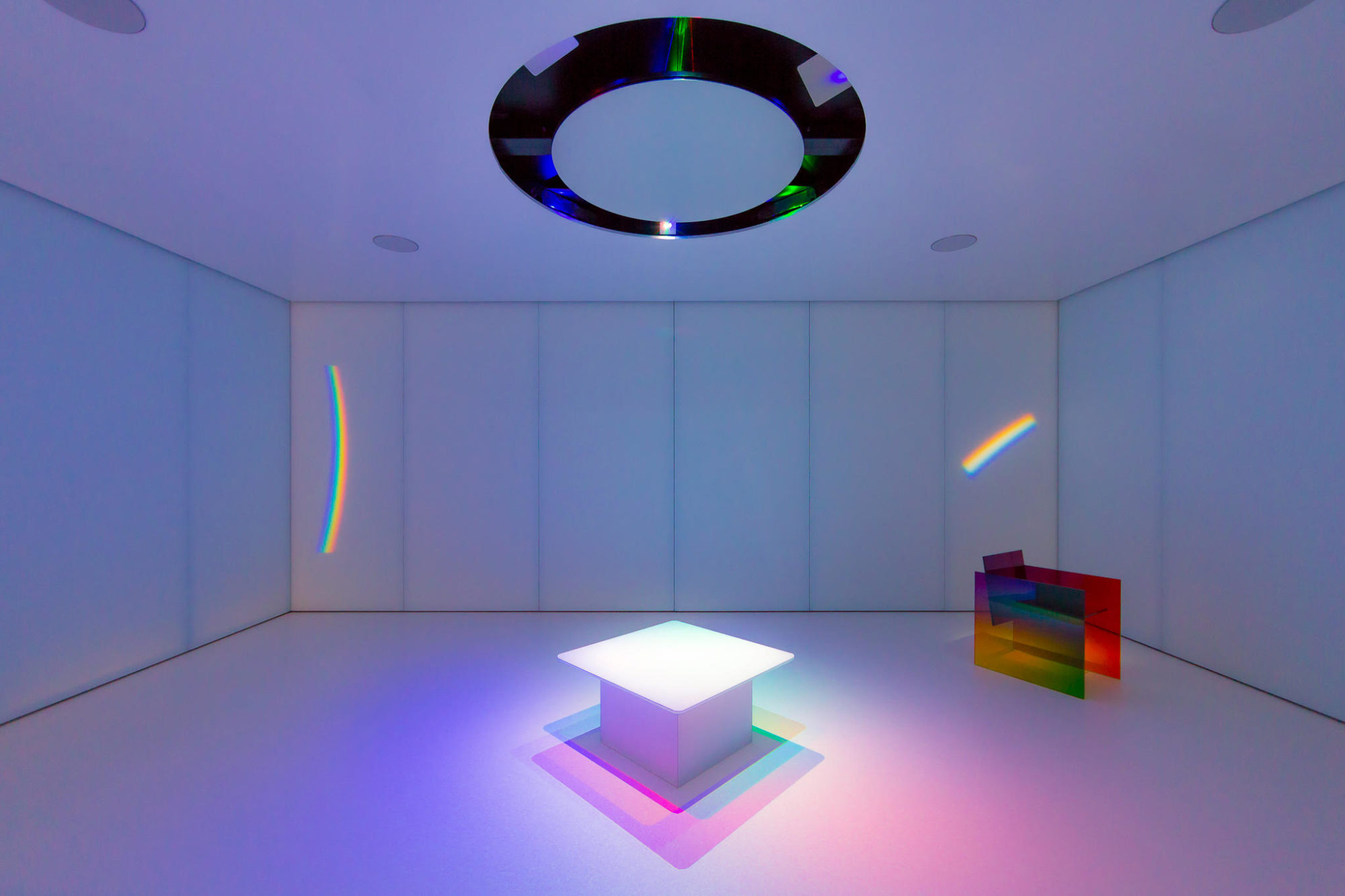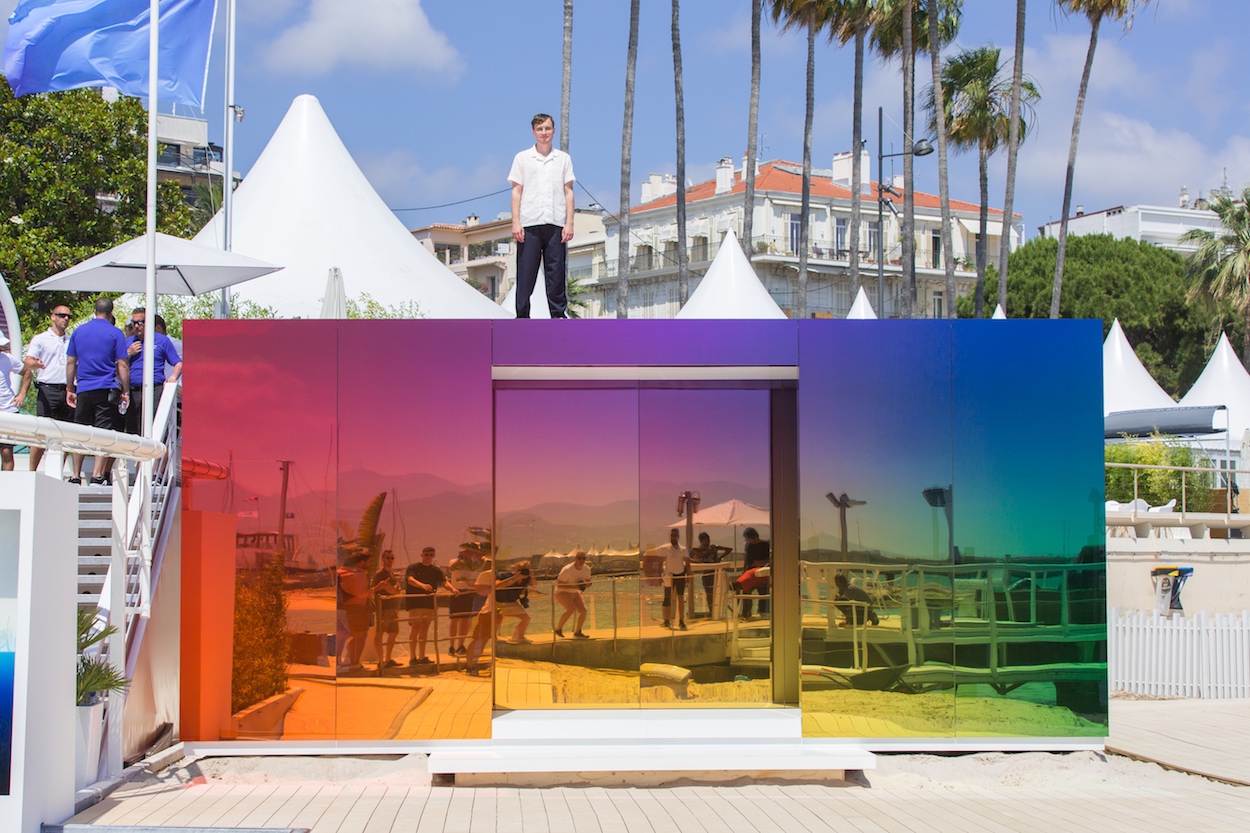When Latvian designer Germans Ermics first received an email from Instagram early this year asking him to collaborate on a large installation, at first he thought it was spam. “Sometimes I get these invitations to get more followers and delete them, but then I opened it and said, ‘Wow. OK, this is real.’”
In the past few years, the 34-year-old Ermics, who studied at the Eindhoven Academy and then opened his own studio in Amsterdam in 2014, has earned awards and a design world following with his collection of deeply saturated glass furniture. His Ombre Glass Chair, a nod to Japanese designer Shiro Kuramata, sparked several architectural commissions, including interiors for fashion brand Alchemist’s Miami boutique by architect Rene González.
Damien Baines, experiential marketing lead at Instagram, read about Ermics’ glass designs and immediately started following him on the platform. “There’s a certain mystery about glass,” he says, explaining his initial attraction to Ermics’ work. “It’s not really a solid, not really a liquid. Glass is extremely innovative and historically, especially when it comes to stained-glass windows in churches, has been a critical medium for storytelling.”
Baines knew who to call when Instagram decided to create a color-centric installation on Facebook Beach, a pier the company takes over for the annual Cannes Lion Festival, the world’s most important marketing awards event, which takes place in the South of France. “We wanted to make a statement about community and culture—the core principles that Instagram stands for—and we thought the best way to express that was through color,” Baines says.
The theme: Where the Rainbow Ends. “The rainbow has long been a symbol of new life and hope across cultures,” Baines says. “In more recent history, it has come to signify the diversity and pride found with the LGBTQIA+ community.” Another inspiration was James Turrell, particularly a quote Baines encountered that stuck with him: “Everyone has a light in them and we come together to find that light in us again and again.”
For Ermics, expressing color through glass has been a primal joy, one that he can experience on a larger scale with the Instagram pavilion. “It was the chance to bring new elements like light and sound into my work and create something I wasn’t able to do on my own,” he says. “And of course Instagram has an immense reach.”
Very quickly, Ermics viewed Where the Rainbow Ends as two different projects. He clad the pavilion’s outer shell in gradient mirrored glass whose color appears and disappears as ethereally as a naturally occurring rainbow depending on the light or the position of the viewer. Meanwhile, the gallery-like interior combines ceramic floors, glass walls, and a single bench. Outfitted with high-tech custom lighting by Urban Electric London, it acts as a prism projector where radiant white light diffuses into a rainbow gradient and shines on whomever sits on the bench. “That’s the capture moment,” says Baines, referring to the inevitable selfie-taking that will ensue. In other words, the social media company #diditforthegram.
Just weeks before the unveiling, Ermics, who recently collaborated on a project with Bang & Olufsen, decided to add music to the experience, enlisting his composer friend Artūrs Liepiņš (one half of a duo that goes by the stage name Domenique Dumont) to create a special soundtrack. “I told him you should see the music and hear the colors,” Ermics says. Although he appreciates Instagram’s message behind Where the Rainbow Ends, Ermics says his intent is less about conveying a profound meaning, rather, as has been always true of his work, “creating something where you can perceive color in other dimensions. It’s really all about the experience.”
When asked about the project’s next destination, Baines and Ermics both anticipate Art Basel Miami Beach. The latter hopes for it to find a permanent home, and has a certain place in mind. “It would look epic in a place like Joshua Tree.”


